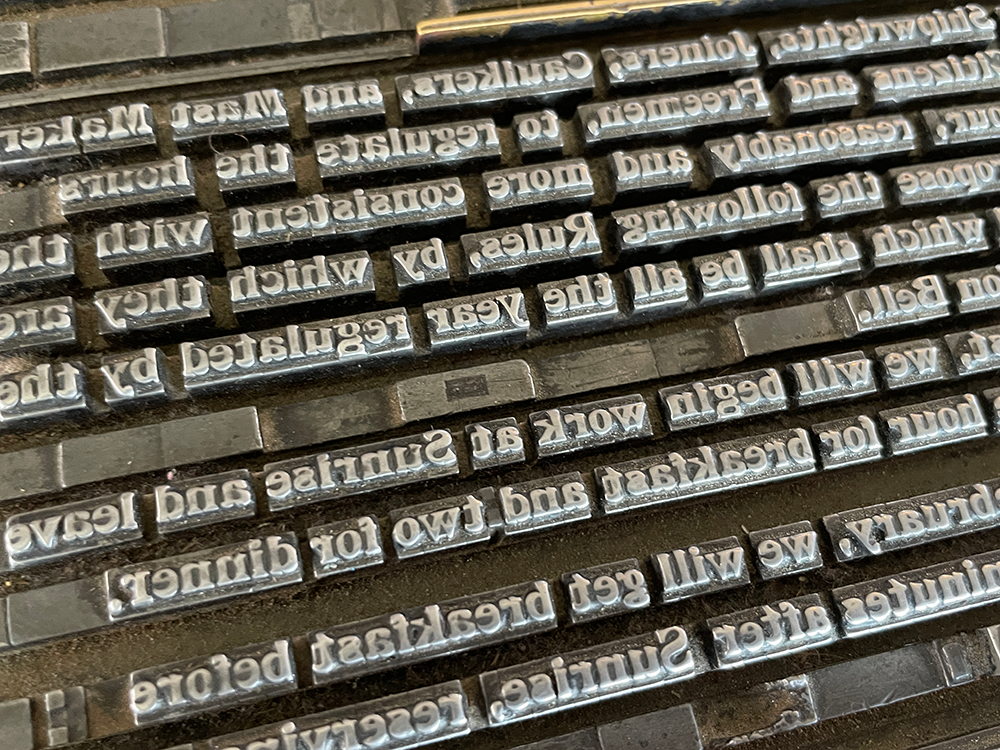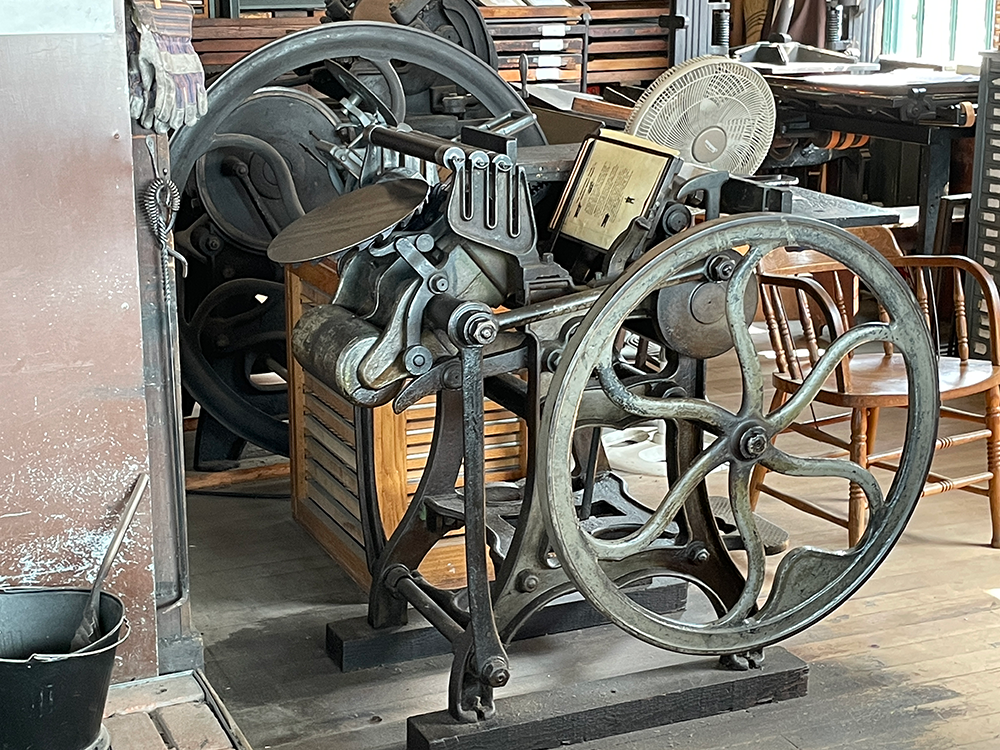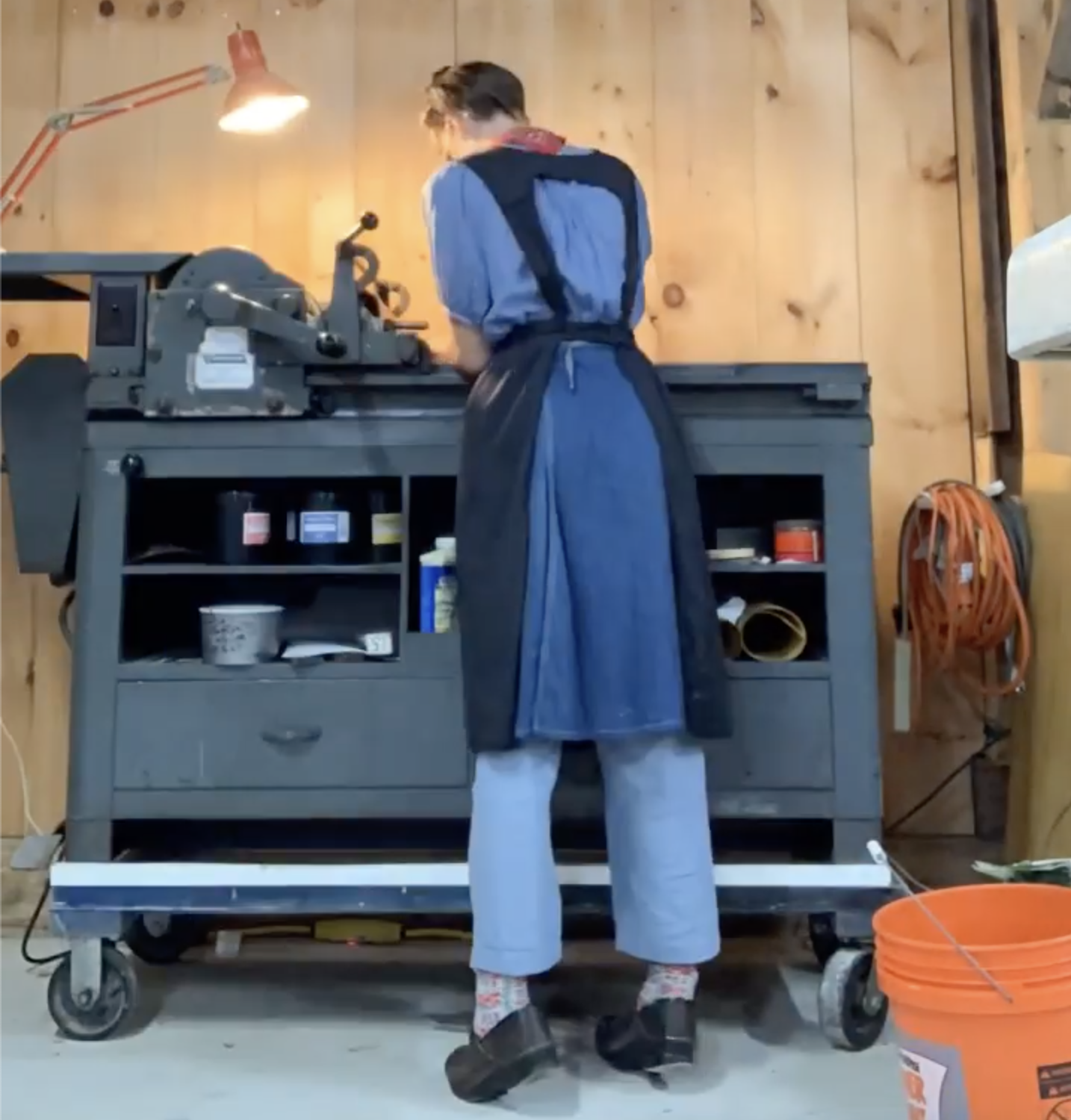Last week I ran a workshop to help writers share their work via email newsletters. The response was far greater than I expected, with hundreds of people registering. (Thank you to all who supported this event! ) Early in the presentation, I outlined why I feel so excited about writers being able to share with readers via newsletters and other means. I noticed the chat come alive, and received a lot of enthusiastic feedback.
But a lot of writers, artists and creators I speak with are apprehensive about the amount of work that may be involved in sharing. They want to spend as much time as possible writing, so they worry about the time, energy, and focus that may go to anything event vaguely considered “marketing.”
I totally understand and appreciate this.
Why would I ever encourage a writer to spend time sharing what they create? Well, this week I was given a reminder; this is how we used to share our writing:

This is a sample of vintage letterpress type from a print shop that is still in operation. On the right are metal letters and words, which would then be used to print the paper on the left. The printmaker said this would have taken someone 45 minutes to set up, moving between dozens of different cabinets to find all of the correct elements. Let’s take a closer look:

Then this would have been run through a large machine to make prints on paper:

Around the shop were dozens of drawers filled with thousands of letters and words. Each would be a specific font and size. There were even drawers full of spaces — for the space between words — in different sizes.

And of course, for each font and size, you will need multiple versions of each letter in order to print each page. So you have to have a stock of maybe 20 F’s in a certain font and size just to print a specific page.
The print shop is a wonderland of wood and metal:

I visited the shop twice this week, and especially on the second visit, the smell was potent. The printmaker seemed to be either cleaning one of the machines, or inking it at the time.
The 45 minutes it would have taken to lay out that one flyer, did not include the time it would have taken to write or edit it. It also doesn’t solve the distribution problem, delivering the final print to dozens or hundreds of people, likely via paid postage, or horseback.
That “publish” button that we are confronted with on email newsletters and social media? That is akin to horseback delivery from 100+ years ago. It’s funny how much the act of publishing and distribution from back then would be define by smells, be it ink, or manure.
Some people still use old-fashioned tools to create. One artist I follow, Addie Best, creates her own prints:

She illustrates these and then carves them into a block using linocut carving:

Then she prints them through her own printing press:

She individually packages up each sold print and brings them to the post office. This is one batch of 170 orders that she prepared:

And through all of this, she earns a living as an artist. Could she illustrate digitally, then upload the final file to a printer in another state to print and mail for her? Yep. But that isn’t how she does it, at least not right now. Her process is her decision, just as your process is your own.
So often, we can feel overwhelmed by trends, that what we are told we have to follow in order to write, publish, and share our work. But every part of that process is for you to choose the path that works for you. Each option provides different opportunities, and different boundaries. As I’ve said many times in the past, I feel that art thrives on boundaries, so boundaries are good things in this case.
Today, there is so much that is scary about the possibilities for how we create and how we share. The other day, Jane Friedman shared that Amazon and Goodreads were becoming littered with books written using AI, but then adding her name to the cover to give them credibility.
Her post received a lot of attention, and she shared many follow ups on Twitter. I encourage you to follow her work, be it on Twitter, her newsletters, or elsewhere.
Of course, many writers are apprehensive about what the future holds, and this can stifle one’s willingness to write, to publish, to share. We are in an odd place right now because of AI’s potential impact on all creative work. For some, there is a feeling of shock and awe at what AI is capable of. I was watching an interview with Björn Ulvaeus from the band ABBA, who got a sneak peak at AI tools still in development. One of his conclusions is that AI may become the best songwriting partner you ever have. But of course, there are so many risks in the process as well.
Individuals and corporations have no idea what the limits are with AI created writing and art yet, so even the smallest step seems to be pushing boundaries in intentional and unintentional ways. In every moment of this, we are all discovering what the ethics involved are. I see so much talk about how difficult it is to withhold permission from having AI being trained on your creative work.
In some ways, people feel that AI is opening up creativity, making it more accessible to more people. In other ways, we are beginning to see a tidal wave of mediocre copies of other people’s writing and artwork flood the marketplace.
I am reminded of the 1983 film, WarGames. In it, the world is put at risk when national defense is automated by a computer. As the movie progresses, the sheer pace of the possibility of world destruction is amplified exponentially, as we watch a computer simulate thousands of ways it can happen within moments.
For writers and creators, that is how the world may feel now with AI. That it could take you months to create something, and AI can create thousands of paltry ripoffs of it in moments.
At the end of the movie, the computer concludes: “A strange game. The only winning move is not to play.”
How do you navigate this moment as a writer or creator? I believe that always starts with embracing the craft that you love.
The craft of writing.
The craft of publishing
The craft of sharing.
You can also make this process small and meaningful.
My visit to the vintage print shop reminded me that while we live in a world that threatens to disrupt how we create, publish, and share, we also live in a world full of incredible access and possibilities for how we create, publish, and share. I hope your days are filled with the craft that you love.
Thank you.
-Dan
